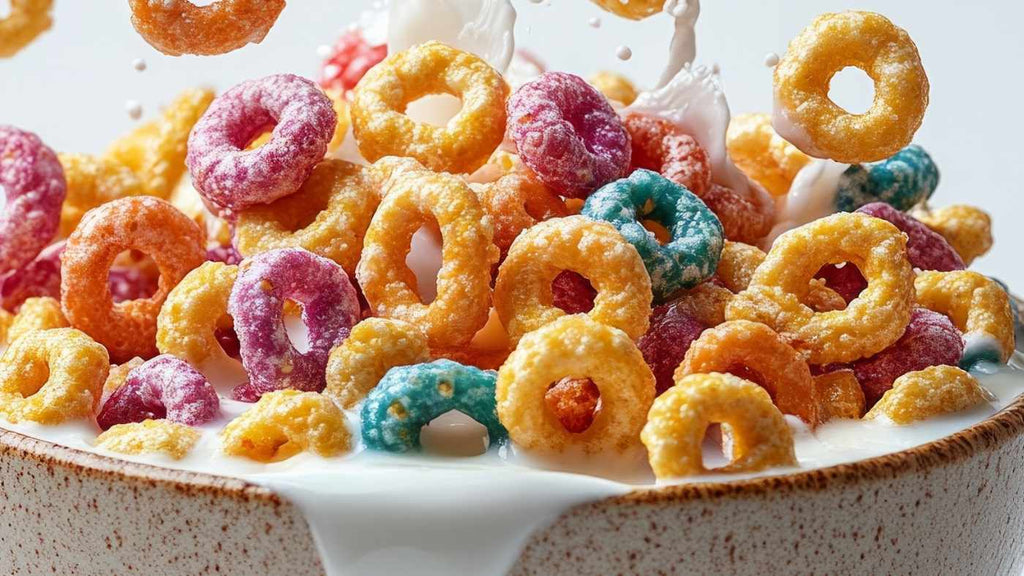WHAT IS HAPPENING IN AMERICA?
If you’ve ever heard someone say, “I felt so much better when I was in Europe,” they’re not imagining things. Many Americans report fewer digestive issues, better energy, clearer skin, and even improved mood while traveling abroad—particularly in countries like France, Italy, or Spain. So what gives?
One major factor is the food. The American food system is saturated with chemical additives, dyes, and preservatives that are either heavily restricted or outright banned in much of Europe. These synthetic ingredients—some derived from petroleum or linked to carcinogenic activity—are commonly found in U.S. snacks, cereals, condiments, and even breads. And the regulatory gap is staggering: roughly 80% of processed foods sold in the U.S. would not be allowed on store shelves across the EU.
But it’s not just about what’s in the food. It’s also about how society is structured. Cities in Europe are built for walking, slowing down, and community-based living. Meanwhile, America’s sprawling layout and car-dependent culture can make it easy to slip into sedentary routines.
Let’s break it down—one meme-worthy truth at a time.
1 – Europeans After Eating vs. Americans With IBS From Drinking Water

It’s a running joke for a reason. Europeans can feast on breads, cheeses, pasta, and pastries—and still feel fine. Americans? We sip tap water and end up with stomach pain, bloating, or a full-blown IBS flare.
Why? Because the ingredients are entirely different. In Europe, many ultra-processed additives are banned or tightly regulated. Food is typically fresher, more local, and more likely to contain traditional fats like butter or olive oil instead of industrial seed oils. Meanwhile, American processed foods are loaded with artificial colors, flavor enhancers, high-fructose corn syrup, and emulsifiers that can wreak havoc on gut health.
It’s not you. It’s the food.
2 – 80% of American Food Products Banned in Other Countries

That’s not a typo—80% of processed food products made in the U.S. are either banned or heavily restricted abroad. This includes not only fast food and snack items but also common household staples.
Why are they banned elsewhere? Because many of the additives used in the U.S. have been linked to cancer, behavioral issues, hormonal disruption, or other health risks. The European Food Safety Authority (EFSA) applies the precautionary principle—if there’s any doubt about a substance’s safety, it doesn’t go in the food.
Meanwhile in the U.S., food companies can use these chemicals until proven harmful beyond a shadow of a doubt—often decades later.
3 – Banned Abroad: A Tour of U.S. Junk Food

Here are just a few of the products that are legal in the U.S. but banned or reformulated in other countries:
-
Pop-Tarts – contain artificial dyes like Red 40 and Yellow 6 (banned or labeled with warnings in Europe)
-
Lucky Charms – artificial dyes and butylated hydroxytoluene (BHT)
-
Mountain Dew – uses brominated vegetable oil (BVO), banned in over 100 countries
-
Fruit Loops – artificial dyes, BHT, and excessive sugar content
-
Skittles – recently sued in the U.S. for using titanium dioxide, a banned additive in the EU
-
Swiss Rolls – made with hydrogenated oils and BHT
-
Smores Cereal – artificial flavorings and preservatives
-
American Ketchup – includes high-fructose corn syrup and often multiple preservatives, while EU ketchup is typically just tomatoes, vinegar, sugar, and spices
Even American-made bread, which you’d expect to be simple, is filled with dough conditioners, preservatives, and synthetic nutrients that would never pass European safety regulations.
4 – U.S. vs. UK Fries: What’s Hiding in That Side Order

Let’s take a look at something as basic as French fries.
UK McDonald’s Fries:
Ingredients – Potatoes, vegetable oil, dextrose, salt.
U.S. McDonald’s Fries:
Ingredients – Potatoes, vegetable oil (canola, corn, soybean), natural beef flavor (which contains wheat and milk derivatives), dextrose, sodium acid pyrophosphate, dimethylpolysiloxane (an anti-foaming agent), and TBHQ (a petroleum-based preservative).
Same product. Entirely different ingredient list. Why? Because in the U.S., these additives are still considered acceptable. Abroad, they’re not. And that should give us pause.
5 – “Do Not Eat” List

You’ve probably seen this meme—a guy standing on a sidewalk holding a cardboard sign listing the ingredients in a common American snack food. What makes it funny is also what makes it terrifying. These are real ingredients used in real products, marketed directly to children and families:
-
Red 40, Yellow 5, Blue 1
-
BHT and BHA (preservatives linked to cancer)
-
High-fructose corn syrup
-
Hydrogenated oils (trans fats)
-
Propylene glycol (used in antifreeze)
-
Titanium dioxide (used in paint)
If a human being holding a cardboard sign listing these ingredients gives you pause… why would you eat them?
Closing Thoughts
The health crisis in America isn’t just about willpower or lifestyle—it’s also about what’s allowed into our food supply. Many Americans are struggling with chronic digestive issues, autoimmune conditions, brain fog, or metabolic dysfunction, unaware that their food is laced with synthetic additives banned across most of the world.
As more people wake up to these truths, there’s growing momentum to return to real food: simple, nutrient-dense, traditional meals made with whole ingredients—like pasture-raised eggs, grass-fed steak, or a Carnivore Bar. Until there’s widespread reform, we have to be our own regulators. Read labels. Ask questions. Vote with your fork.
Citations (MLA Style, in order of claims):
-
Holton, Emily, et al. “The Effects of Food Additives on Gut Microbiota and Gut Health.” Nutrients, vol. 14, no. 1, 2022, pp. 1–25. https://doi.org/10.3390/nu14010041.
-
Smith, Andrew. “Why Are 80% of U.S. Processed Foods Banned in Europe?” Global Research, 2023. https://www.globalresearch.ca/why-are-80-of-us-food-products-banned-in-other-countries/5806195.
-
Center for Science in the Public Interest. “Food Dyes: A Rainbow of Risks.” CSPI Reports, 2022. https://www.cspinet.org/resource/food-dyes-rainbow-risks.
-
McDonald’s UK vs. USA Ingredients List. McDonald’s Corporate Nutritional Info, 2023. https://www.mcdonalds.com.
-
Foodwatch. “Food Additives to Avoid: A Guide to Commonly Used Toxic Ingredients.” Foodwatch EU, 2023. https://www.foodwatch.org/en/what-we-do/topics/additives/.

